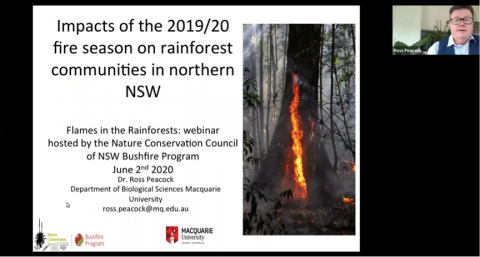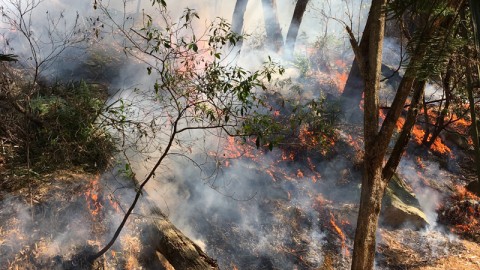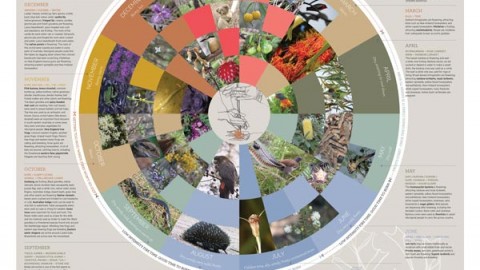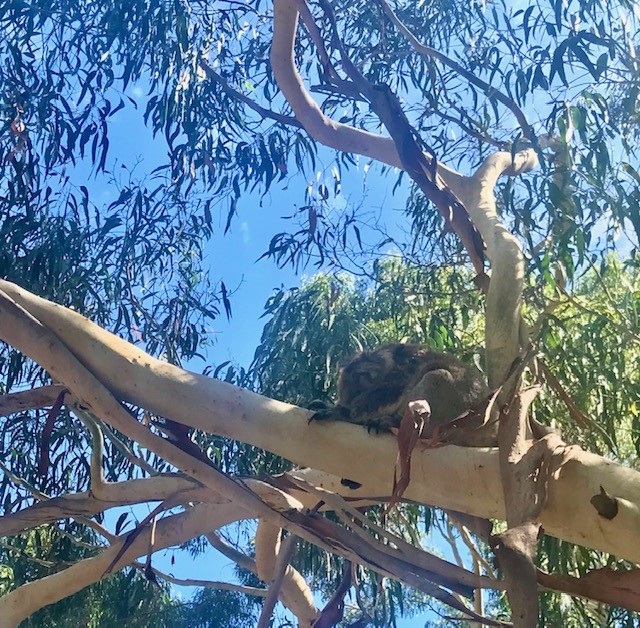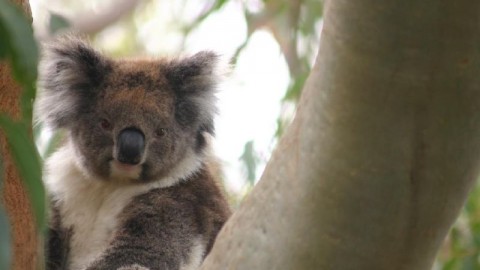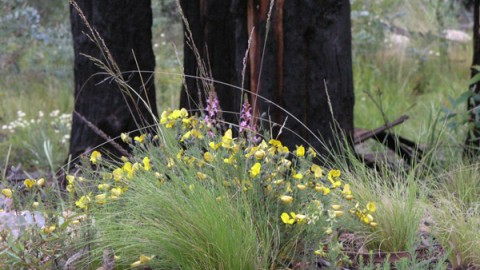Dr Ross Peacock from Macquarie University answers audience questions following the live webinar Flames in the Rainforests: bushfire impacts and restoration in NSW hosted by NCC’s Bushfire Program on June 2nd.
Watch the recorded webinar here
Ross, has your lab work related those flammability traits to any chemical or other leaf traits?
Flammability of fuel is a common measure of fire behaviour and is composed of four different components: ignitability, sustainability, combustibility and consumability. Flammability is related to intrinsic properties of the fuels such as structural characteristics, chemical composition, fuel moisture content and fuel arrangement. For the technically minded we measured traits such as time to ignition (s), flame duration (s), peak HRR (kW/m²), peak MLR (g/s), time to ignition (s/g), flame duration (s/g), residual mass fraction (%) and peak mass loss rate (1/s). Our traits include mean SLA (cm2/g), mean leaf dry wt (g), P mg/kg, C Wt, N Wt %, cellulose wt%, lignin wt%, total ADF wt%, ash wt% and solubles wt%. The relationships still need to be explored and we are planning to advertise a PhD student opportunity shortly with The University of Melbourne to pursue this work.
Ross, are you able to comment on wet sclerophyll forest flammability and recovery, especially where they have important rainforest understorey?
Our focus has been rainforest because it is relatively poorly understood. The Victorians are researching wet sclerophyll flammability and I would look at Trent Penmans work or the foundational work by David Ashton and Jamie Kirkpatrick. It’s a good question because the two types are interconnected spatially and floristically so we need to understand their interdependencies.
What are the chances for the regeneration of these ancient rainforest trees after such hot fires?
It varies with species, size class, extent of damage and possibly antecedent drought stress. A number of species express basal coppice from meristematic tissue, however the coppice is heavily browsed. Some appear to have lignotuberous tissue, which is interesting and basically unreported. We are currently measuring the response of a range of rainforest tree species and size classes and will have new results by September. Keep an eye on this site for the outcomes report.
Given likely pressures for more hazard reduction burning post fires, how can this be done to provide maximum protection to rainforest – both suppression of fire and landscape strategies?
Most rainforest in NSW exists in remote forested landscapes where active suppression during extreme fire behaviour is unlikely from a resourcing and priority perspective or is similarly unlikely to be effective because of the fire line intensity experienced during major incidents. This places the emphasis on hazard management and risk planning. We need hazard management strategies that recognise climate changes, and that when we experience extended spring droughts, larger fire seasons like 2019/20 and 1967/68 will occur. Strategically managing fuel hazard adjacent to rainforests in traditional fire paths is critical, while also managing the adjacent forest for their values. We need to map out these fire paths through a careful analysis of the fire behaviours experienced in 2019/20 and 1967/68 and apply modern predictive analysis tools to evaluate how we can manage risk using alternate fuel management techniques. We should also realise that 5.4 million ha of NSW has just burnt, and in 7-10 years we will have 5.4 million ha of fuel hazard at its maximum equilibrium level often in very large contiguous areas of remote forest.
Hi Ross, are the heat yield data on various species tested available?
Data on heat release rate and other traits from rainforest species burnt in the laboratory were collected but are yet to be analysed, peer-reviewed and published. We are continually applying for grant funds to enable this work to be completed and published.
Dr Ross – systematic impact assessment for rainforest recovery (I think I got the title right) – how is this structured, is the intent to prioritise rainforest areas for protection? Does this protection include fire suppression activities and how do you prioritise rainforest protection in the planned burning program where life and property is a priority?
Preliminary analysis of fire severity and rainforest type mapping indicates the impacts of the 2019/20 season vary across rainforest types, with the most severe impacts on dry rainforest communities. There is a further dimension related to landscape position and perimeter area to edge ratio of the individual rainforest stand. These results are not new – I saw them after the 1983 Cann River fires in East Gippsland when I worked on the post-fire assessments much earlier in my career. Systematic assessment is so important after major fire events, without these assessments we miss the opportunity to learn from the event and listen to the experiences of local residents and fire-fighters.
The issue of prioritising environmental asset protection (ie rainforests, wildlife, threatened species) is one that is rapidly evolving. How it intersects with life and property protection is determined through the legislative programs managed by the NSW fire-fighting authorities.
Ross, what is the broad relationship between rainforest expansion/contraction and atmospheric CO2 over geological time?
A question for a paleoclimatologist.
Is there any data that compares fire impacts in different Rf types? Are DRf faring any ‘better’? Are they expanding their range compared with StRf or CTRf? Thanks very much.
Yes there is. NSW DPIE holds spatial data on the relationship between fire severity and the different rainforest formations and plant community types. The data I have seen from northern NSW indicates dry rainforest communities have seen significant fire impacts in 2013, 2015 and 2019. Range expansion is difficult to assess quantitatively until we do more research. Pople and Cowley from the former Forestry Commission of NSW mapped rainforest systematically in NSW in 1981 and the opportunity exists to analyse expansion/contraction/no change by comparing it to more recent rainforest mapping.
Why do you think older tree are more susceptible?
This is the subject of new work we are undertaking in northern NSW. It’s basically an issue of the buttress morphology of older trees being more susceptible to accumulating dry wood and litter and igniting during ember attack.
Do you think the trends are the same for cool/temperate rainforests?
The trends are likely to be different for the NSW rainforest formations. Each has unique characteristics in terms of landscape position, flammability traits, relationship to traditional fire paths, susceptibility to drought impacts, etc. We need to research this relationship further to provide land managers with the advice to develop their risk management strategies.
Hear what the other experts have to say:
Conservationist Dailan Pugh (OAM)
Australian Association of Bush Regenerators President Dr Tein McDonald (AM)

